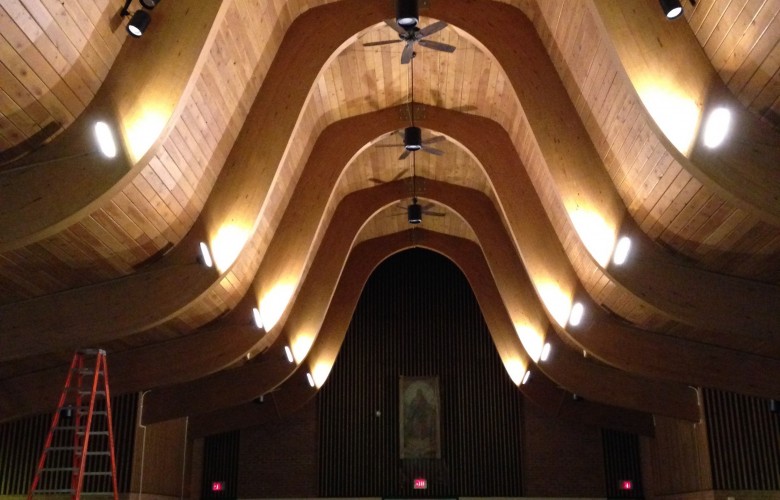St Paul’s Lutheran Church
JRLX was called upon to provide a complete LED solid-state lighting retrofit for St. Paul’s Lutheran Church in Lockport, Illinois.
St. Paul’s Lutheran Church conducted a massive sanctuary renovation project that included a complete aesthetic upgrade from the original 1970s design that included a large energy-efficient lighting system designed, provided, and installed by JR Lighting Design, Inc. With beautiful, swooping glue-lam beam architecture that was originally designed to look like the inside of Noah’s Ark, the architectural lighting treatment of the St. Paul’s sanctuary had to achieve the very specific goals of: Increased illumination, enhanced quality of light, increased energy efficiency, and decreased maintenance. JR Lighting Design, Inc. met and exceeded all goals.
"We’re all thrilled. The end product is just awesome”
Ted Jarosz
St. Paul’s Lutheran Church
JRLX President Jason Reberski says of the project, “ The existing metal halide and tungsten original 1970s lighting system was drawing 8,200 watts of power, was for the most part, not dimmable, and had terrible color rendering – not to mention that illumination levels were inadequate. We utilized a mixture of modern LED technology including (17) Altman Chalice 100W and 50W 3K White LED Downlight Fixtures for house-lighting (12 with custom in-house fabricated holographic diffusers), (10) specialized “no optic” Philips Color Kinetics iW Blast fixtures in 2700K white to illuminate the ceiling architecture (2) 36 Degree Philips Color Kinetics iW Blast Fixtures in 2700K white to illuminate the new Cross. We also installed (28) Philips Dimmable LED retrofits to illuminate the Altar area and we tied everything into a brand new ELV dimming system to give full-range dimming control over the entire LED system.”
The end result is a lighting system that draws only 1, 632 watts of power, has increased illumination levels and color rendering, and accentuates the modern aesthetic while paying homage to the original architecture. The finished system also provides the customer with a greater level of control and requires practically zero-maintenance.










